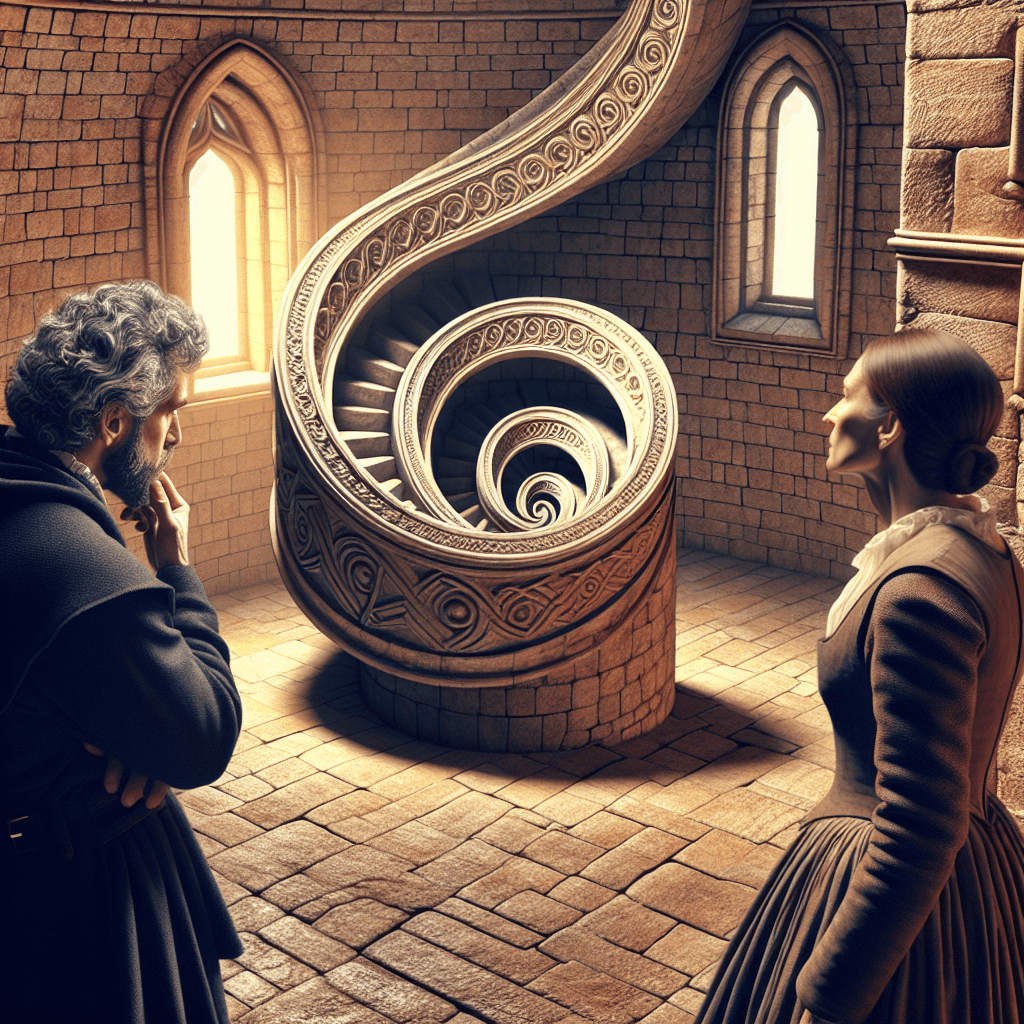Why are castle spiral staircases almost always built to turn clockwise
This common architectural feature wasn't a stylistic choice; it was a brilliant and deadly defensive strategy designed to give the castle's defenders a crucial, life-or-death advantage in a sword fight.


Too Long; Didn't Read
TLDR: Castle spiral staircases are clockwise to give right-handed defenders a tactical advantage. An attacker climbing up would have their sword arm restricted by the central pillar, while the defender coming down would have a free, wider swing.
A Step in the Right Direction: Why Are Castle Spiral Staircases Almost Always Built to Turn Clockwise?
Have you ever walked up a narrow, winding staircase in an old castle and felt a slight sense of claustrophobia? You might have noticed that your right hand naturally brushes against the outer wall as you ascend. This is no accident. The direction of these staircases, known as turnpikes or newel stairs, is one of the most ingenious and subtle defensive features in medieval architecture. So, why are castle spiral staircases almost always built to turn clockwise? The answer lies in a life-or-death struggle, favoring the castle’s defenders. This blog post will explore the brilliant military strategy behind this common architectural choice.
The Right-Handed Defender's Advantage
The primary reason for the clockwise spiral is rooted in a simple human fact: most people are right-handed. Medieval military strategists and architects understood this and used it to give their soldiers a significant combat advantage.
Imagine a single defender standing at the top of a spiral staircase, facing an attacker coming up.
- Freedom of Movement: As the staircase spirals clockwise on the ascent, the widest part of the step is on the right. For a right-handed defender moving down the stairs to meet an enemy, their sword arm is on the outside of the curve. This gives them maximum space to swing their weapon freely and powerfully.
- The Central Pillar as a Shield: The narrow central pillar, or newel, provides the defender with a degree of cover for their left side. They could peek around the column and strike with their sword arm completely unhindered.
This design turned a narrow stairwell into a deadly chokepoint, allowing a single, well-positioned defender to hold off multiple attackers.
The Attacker's Nightmare
Now, consider the plight of the right-handed attacker trying to fight their way up the same staircase. Their situation is the complete opposite and is fraught with disadvantages.
- Restricted Sword Arm: As the attacker ascends the clockwise spiral, their right arm—their primary weapon arm—is jammed against the tight curve of the central pillar. This severely restricts their ability to draw their sword fully or make a powerful, effective thrust or swing. They would be forced into awkward, weak, backhanded attacks.
- Useless Shield: An attacker would typically carry their shield in their left hand. On a clockwise stair, this places the shield against the outer wall, rendering it almost useless against a defender striking from above and to the right.
- Footing and Visibility: The narrowest part of the stair tread is next to the central column, making for treacherous footing, especially in the heat of battle. The attacker also has limited visibility of the defender above, who can see them coming much more easily.
This clever design effectively neutralized an attacker’s strength and skill, forcing them into a one-on-one fight on terms dictated entirely by the castle's architecture.
The Exceptions to the Rule
While the clockwise spiral was the dominant design, it wasn't universal. Some castles feature counter-clockwise staircases, and these exceptions are just as fascinating. The most famous examples are found in the castles of the Kerr family in Scotland. The Kerrs were renowned for being predominantly left-handed, a trait they cultivated for a battlefield advantage. Consequently, castles like Ferniehirst Castle were built with counter-clockwise stairs to give their left-handed swordsmen the same defensive advantage their right-handed rivals enjoyed elsewhere.
In other cases, the layout of the castle or the specific location of the tower might have simply made a counter-clockwise stair a more practical fit, suggesting that defense, while crucial, was not always the only consideration.
A Legacy Carved in Stone
In conclusion, the clockwise direction of most castle spiral staircases is a masterful example of form following function. It wasn't an arbitrary design choice but a calculated defensive strategy that exploited the simple fact that most soldiers were right-handed. By giving the defender a wide arc for their sword and cramping the attacker against a central pillar, this design could turn a single warrior into a formidable obstacle. It’s a subtle detail that reveals the sophisticated and deadly mindset of medieval builders. So, the next time you visit a castle, take a moment to notice which way the stairs turn and appreciate the silent, life-saving story they tell.
More Articles

What creates the warm crackle sound unique to vinyl records?
That iconic warm crackle is more than just dust and nostalgia—it's the sound of a microscopic story of friction and physics being told in real-time.

Why do some insects build and wear a backpack made from the corpses of their victims?
For some of nature's tiniest predators, the best defense is a grisly offense—building a protective shield from the corpses of their vanquished prey.

Why are Earth's deserts not random, but aligned in two distinct belts?
It’s not a coincidence that the world's great deserts are aligned in two perfect bands; they are the direct creation of massive, invisible rivers of air that perpetually circle the globe.